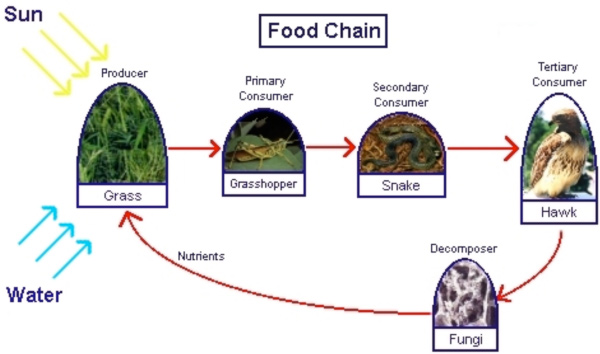

What is most likely to occur if a disease causes a significant decrease in the population of grasshoppers?
A. The grass population will increase, and the snake population will increase.
Incorrect. The snakes will have less food if the grasshoppers decrease.
B. The hawk population will increase, and the snake population will decrease.
Incorrect. The hawks cannot increase if the snakes decrease.
C. The grass population will increase, and the snake population will decrease.
Correct! If grasshoppers decrease, grass will increase. If snakes have less grasshoppers to eat, they will decrease.
D. The grass population will decrease, and the snake population will decrease.
Incorrect. If there are less grasshoppers, there will be more grass.
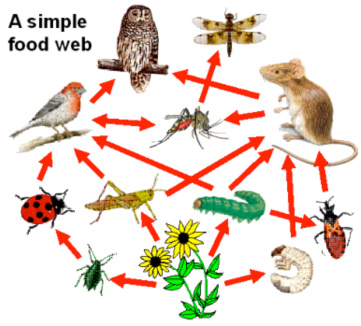
Which ecological interactions do the arrows represent?
A. ecological succession in a community
Incorrect. Succession is a change in an environment over time.
B. the flow of energy in an ecosystem
Correct! Energy flows from one organism to another in the direction of the arrows.
C. evolution in a community
Incorrect. Evolution represents a change in organisms over time.
D. the role of decomposers
Incorrect. Decomposers breakdown dead and decaying plants and animals.
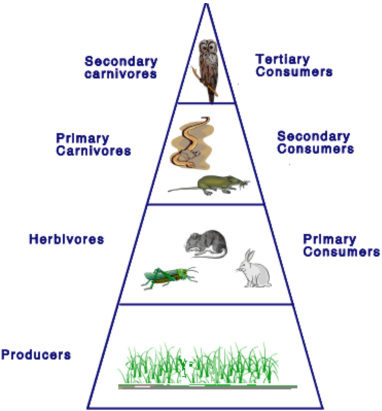
Based on the information given in the ecological pyramid, which of the following statements is false?
A. There is a greater amount of energy stored in primary consumers than in secondary consumers.
Incorrect. Primary consumers have more energy than secondary.
B. There is a greater amount of energy stored in owls than in snakes.
Correct! The owls are at a trophic level above the snakes, having less energy.
C. There is a greater amount of energy in rabbits, than in snakes or owls.
Incorrect. Rabbits are at a lower trophic level, having more energy.
D. There is a greater amount of energy stored in producers than in herbivores.
Incorrect. Producers have the most energy of all trophic levels.
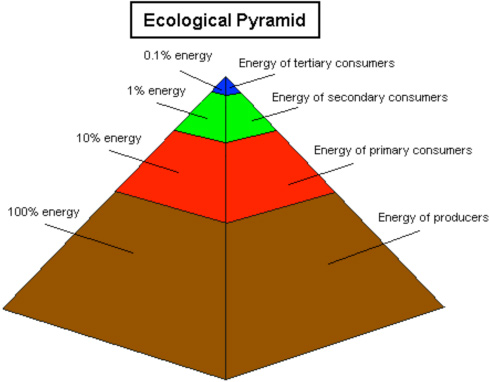
Based on the ecological pyramid above, how much energy is transferred from one trophic level to the next?
A. 90%
Incorrect. About 90% of energy is lost to heat, etc.
B. 110%
Incorrect. The amount of energy transferred cannot exceed the original amount of energy present.
C. More than 20%
Incorrect. 100 divided by 10 is equal to 10.
D. Less than 15%
CORRECT! Only about 10 % of energy is passed to the next trophic level.
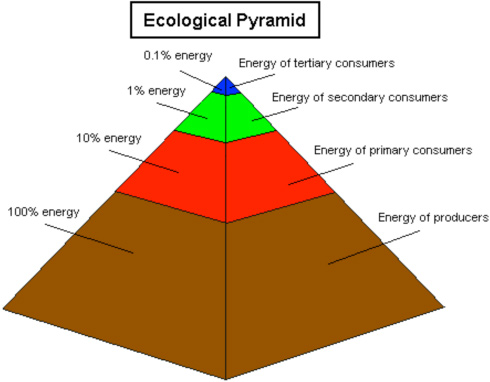
Based on the ecological pyramid above, which statements are true?
A. I
Incorrect. I and II are both correct.
B. III
Incorrect. Population size decreases as you go up the pyramid.
C. I and II
CORRECT! Both population and energy decrease as you go up the pyramid.
D. I and IV
Incorrect. Energy decreases as you go up the pyramid.